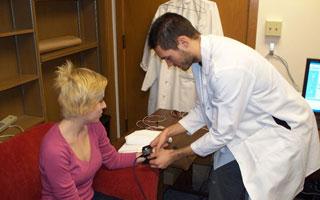When modern-day crooner Trey Songz sings, “Cause girl, my heart beats for you,” in his romantic ballad, “Flatline,” his lyrics could be telling a tale that’s as much physiological as it is emotional, according to a University of California, Davis, study that found lovers’ hearts indeed beat for each other, or at least at the same rate.
Emilio Ferrer, a UC Davis psychology professor who has conducted a series of studies on couples in romantic relationships, found that couples connected to monitors measuring heart rates and respiration get their heart rate in sync, and they breathe in and out at the same intervals.
To collect the data, the researchers conducted a series of exercises, sitting 32 heterosexual couples a few feet away from each other in a quiet, calm room. The couples did not speak or touch.
“We’ve seen a lot of research that one person in a relationship can experience what the other person is experiencing emotionally, but this study shows they also share experiences at a physiological level,” Ferrer said.
The couples, in one of the exercises, were asked to sit across from each other and mimic each other, but still not speak, and researchers collected very similar results.
The researchers also mixed up the data from the couples. When the two individuals were not from the same couple, their hearts did not show synchrony, nor did their breathing closely match.
Additionally, both partners showed similar patterns of heart rate and respiration, but women tended to adjust theirs to their partners more. This was true not only for physiological but for day-to-day emotional experiences as well.
“In other words, we found that women adjust in relationship to their partners,” said Jonathan Helm, a UC Davis psychology doctoral student and primary author of the study. “Her heart rate is linked to her partner’s. I think it means women have a strong link to their partners — perhaps more empathy.”
The research was published in two recent papers by the American Psychological Association, available at:
http://www.ncbi.nlm.nih.gov/pubmed/21910541 and http://www.ncbi.nlm.nih.gov/pubmed/23107993.
Co-author: David Sbarra, University of Arizona Department of Psychology.
The National Science Foundation supported the research.


